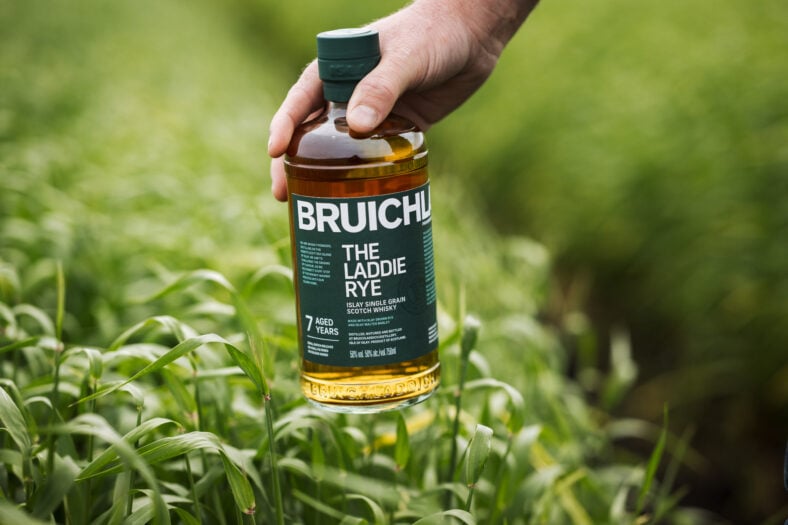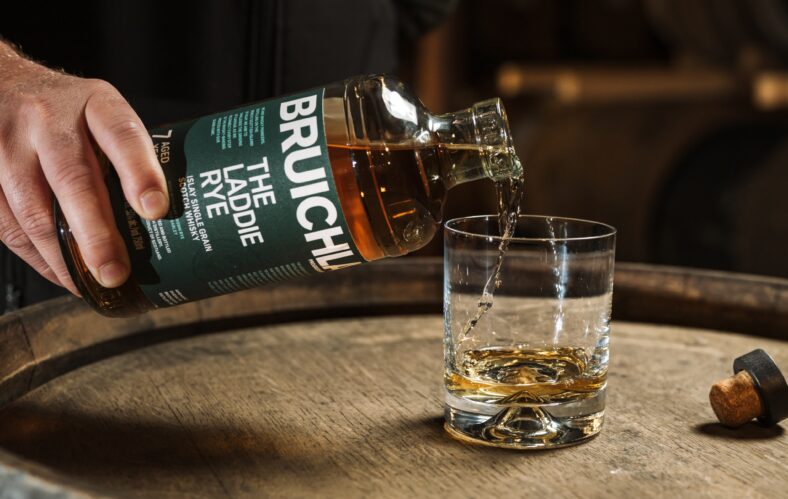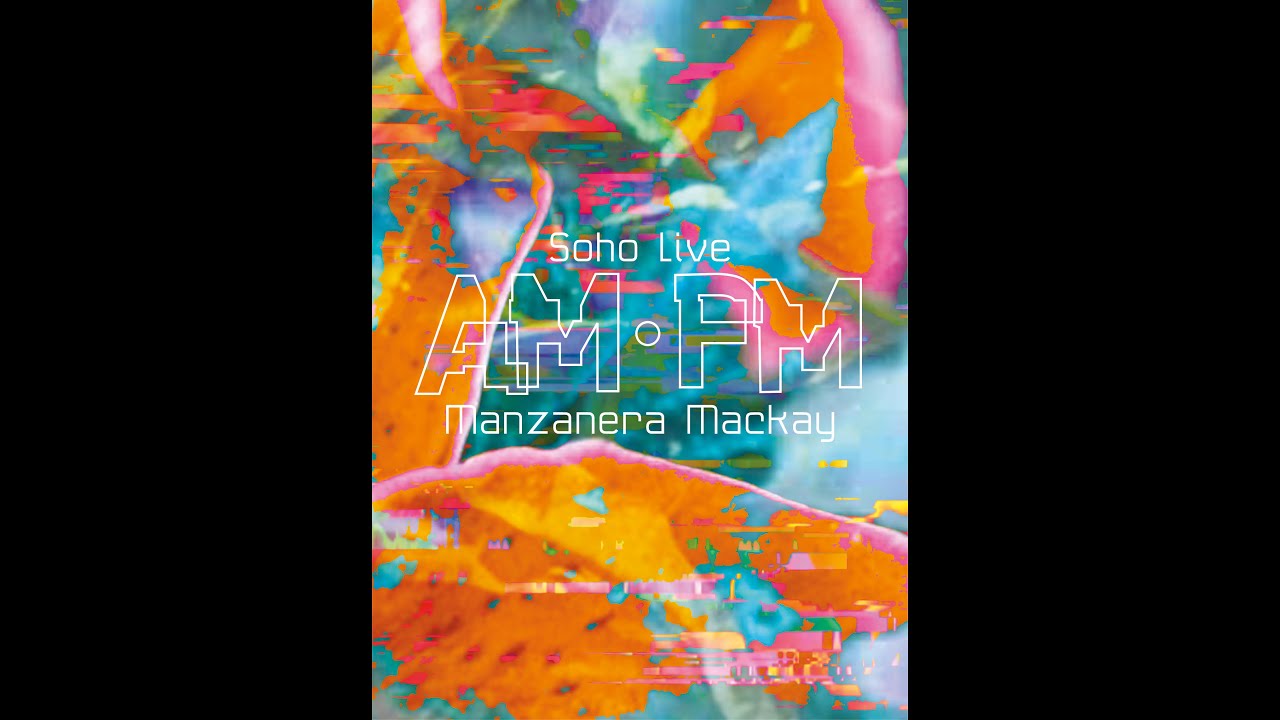
The most interesting new bottle of rye whiskey in the United States checks a lot of boxes — it’s a 7-year-old, 100 proof, non-chill filtered newcomer competitively priced at just $60. There’s just one problem: it wasn’t made in the U.S,, or even Canada — it was grown, distilled, aged, and bottled in Islay, Scotland.
Bruichladdich’s “Laddie” Rye is a major first for the Scottish whisky industry. While it’s not the first Scottish rye, it’s the first to be distilled in Islay and the first to use only Islay grain. The mashbill of 55 percent rye and 45 percent malted barley can be traced to 15 individual farms within an 11-mile radius of the distillery itself.
Bruichladdich has been working with Islay farmers since 2017. Part of the support for local farmers comes from a desire to reduce unnecessary emissions (why ship it when you can grow it yourself?) but an equally important priority for Bruichladdich is investment and partnership with the local community, which has been essential to their successes in the last decade.
In many ways, Laddie is similar to North American ryes: the color is natural, and the barrels are entirely American oak. But this is where some of the differences already start to make themselves known. While 7 years aging in Kentucky will create a dark, oak-forward whiskey, in scotland the aging process moves more slowly. That means more fruity flavors, a slightly lighter color, and fewer of those rich caramels and brulee notes.
As for the barrels, while they are indeed American oak, they’re not first char barrels like you’d expect to find in bourbon distilleries. Bruichladdich decided on a mixture of two barrel types: ex-bourbon casks (they aged bourbon before being dumped and shipped to Scotland) and virgin American oak that has been toasted instead of charred. This changes how the wood influences the liquid — less brown sugar and smoke, more coconut and caramel. Less brulee, more vanilla.

Bruichladdich Laddie Rye teases subtle hints of ginger snap and baking spices on the nose, complemented by a citrusy barley brightness. On the palate, the peppery rye character is muted compared with some of the more intense American whiskeys. Clover honey and vanilla sort of swirl around hints of those baking spices, before becoming more nutty on the finish, with just a hint of that toasted oak milk chocolate coming through.
Bruichladdich worked hard to bring this bottle to market (suffering through the often finicky process of distilling rye, which is famous for flooding distilleries, overflowing tanks, and creating havoc in the mashing process), and what they’ve delivered is versatile and sippable, if a bit hard to categorize.
Is it a Scottish-style rye, or an American-style blended malt? Is it Sazerac-ready, or just the right thing for a Manhattan/Rob Roy mashup? The answer is a little of everything. Because Bruichladdich is releasing Laddie Rye exclusively to the U.S. market, it can be categorized as a rye whisky (in Scotland, it would technically be labeled as a single grain whisky).
It’s unclear if scotch drinkers will be willing to try a different recipe, or if bourbon and rye drinkers will try a new country of origin. Also unclear: which shelves your local shop will stick this bottle on. Check scotch, then rye, then bother someone behind the counter if you can’t find it.
But for $60, Laddie is worth finding. It’s objectively the most interesting rye to release in 2025, and priced to solicit some bravery on your part. If you do love it, make sure to grab a few bottles. Adam Hannett, Bruichladdich’s master distiller, reportedly said that future Laddie releases may be different — ages, cask types, and other variables might change as they experiment with the mashbill. So we may see versions of this unique rye in in the future, but they likely won’t be exactly the same.
G. Clay Whittaker is a Maxim contributor covering lifestyle, whiskey, cannabis and travel. His work has also appeared in Bon Appetit, Men’s Journal, Cigar Aficionado, Playboy and Esquire. Subscribe to his newsletter Drinks & Stuff for whisky reviews and trends, perspectives on drinks, and stuff.














